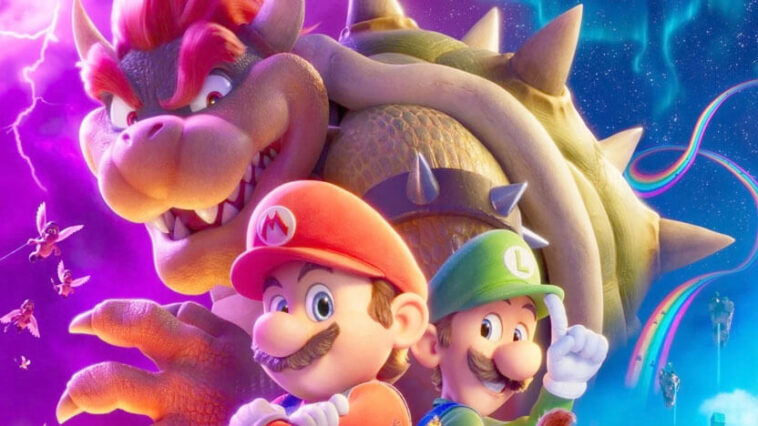The Super Mario Bros Movie: A Look Back on the 1993 Video Game Adaptation
The Super Mario Bros movie holds a completely unique vicinity in video game film records. Released in 1993, it changed into the primary ever live-movement movie version of a video game. The film pioneered bringing cherished game characters to life but failed to capture Super Mario’s magic.
The Super Mario Bros games revolutionized platforming and became synonymous with Nintendo’s ascendance in the video game enterprise. Moreover, Super Mario Bros launched for the NES in 1985 and went on to become one of the best-selling and most iconic games ever. The sequel, Super Mario Bros 2, brought new playable characters like Princess Peach and Toad. Super Mario Bros 3 constructed on the method with new energy-America like the Super Leaf and Tanooki Suit.
With the games’ popularity, a Super Mario Bros film entering production was inevitable. Predictably, Hollywood saw potential to bring Mario, Luigi, Princess Peach, and the Mushroom Kingdom to life onscreen. However, the transition from 8-bit facet-scroller to live-action movie proved challenging.
Super Mario Bros Movie Development and Production
The Super Mario Bros film started improvement within the late Nineteen Eighties, quickly after the discharge of Super Mario Bros 3. The husband-and-wife team of Roland Joffé and Jake Eberts secured the rights to produce a Mario film from Nintendo. They originally envisioned an animated film, but eventually settled on live-action.
The first drafts of the script stayed distinctly near the Mario games, with the Mario Brothers adventuring via a fable kingdom to rescue Princess Peach from Bowser. However, the manufacturers wanted to floor the film in a more gritty, cyberpunk putting. Through rewrites, the Mushroom Kingdom became Dinohattan, a dark alternate New York ruled by dinosaur-evolved humans.
Joffé brought in Max Headroom creators Rocky Morton and Annabel Jankel to direct. The visual effects team used state-of-the-art technology, pushing the boundaries of early CGI and animatronics. For Mario and Luigi, the production hired Bob Hoskins and John Leguizamo, both acclaimed dramatic actors aiming to break into more commercial roles.
The film shot on location in North Carolina and on elaborate Dinohattan sets at a converted cement factory. However, the shoot was filled with tension, as creative disagreements arose between directors and producers over the film’s tone and faithfulness. Rumors circulated about an otherworldly, cult-like atmosphere on set.
Super Mario Bros Movie Plot and Reception
When it hit theaters in May 1993, The Super Mario Bros confounded both critics and audiences with its convoluted storyline and dark, dystopian setting. Bob Hoskins and John Leguizamo starred as Mario and Luigi Mario, a pair of down-and-out plumbers living in Brooklyn. After a mysterious woman enters their lives, the Mario brothers get sucked down the drain into Dinohattan, an alternative universe ruled by humans descended from dinosaurs.
In this bizarre world, a ruthless King Koopa (Dennis Hopper) has merged the two dimensions and is plotting total domination. Princess Daisy (Samantha Mathis) leads a resistance movement to stop him. She is the parallel world counterpart to Mario’s damsel in distress, Princess Peach, who never actually appears. The Mario brothers have to navigate the dangerous urban landscape, with its punk rock aesthetic, genetic experiments and slippery reptilian villains.
Fans of the whimsical Super Mario games were confused by the film’s dark tone and adult themes. Much of the Mushroom Kingdom fantasy was replaced by dystopic science fiction. Mario and Luigi use guns instead of cartoonish power-ups. The family-friendly spirit of the games got lost amidst Dinohattan’s dark alleys and nightclubs.
Critics lambasted the movie’s incoherent plot, unfaithful interpretation of the source material and weak special effects. The movie only pulled in $20 million at the box office against a $50 million budget, making it a bomb for the studio. Hoskins himself disparaged the film, calling it the “worst thing he ever did”.
Super Mario Bros Legacy as a Cult Film
In subsequent years, The Super Mario Bros has developed a cult following for precisely those elements that made it first fail. Fans appreciate it as a weird artifact that took the Mario games in an unexpectedly dark direction.
Dinohattan’s gritty cyberpunk look has drawn interest for its bold artistic choices. Hopper’s manic performance as Koopa also earned some praise. The movie has inspired YouTube analysis and essays re-evaluating it as an avant-garde take on Super Mario through the lens of 1990s dystopian sci-fi.
For all its flaws, The Super Mario Bros movie stands as a product of its time that encapsulates the promises and perils of early video game films. It aimed to plunge headfirst into bringing the interactive medium of games to life, unconstrained by fans’ expectations. The film has become a cautionary tale but also a nostalgic what-if for those who appreciate its surreal, idiosyncratic vision.
While a failure in 1993, The Super Mario Bros endures as the first Mushroom Kingdom film adaptation. Subsequently, it paved the way for future attempts like the animated TV series and 2023 Mario movie starring Chris Pratt. Nonetheless, the movie’s spirit works as a reminder risks sometimes lead to cult classics rather than box office smashes.
Box Office Performance and Business Impact
The Super Mario Bros Movie hugely anticipated as the first ever live-action video game adaptation. Allied Filmmakers and Cinergi Pictures undertook the movie as a major endeavor with an estimated production budget between $40-50 million. Nintendo also had high commercial hopes for the film to expand their most iconic franchise beyond games.
However, while released in May 1993, Super Mario Bros. Was a convincing box office bomb. It grossed best $20.9 million within the United States towards its excessive price range. It also underperformed internationally, earning just $21 million from foreign markets for a worldwide total of $41.9 million. The movie lost studios tens of millions in revenue compared to the budget. For Nintendo, it was a blow to their plans of dominating other media. The financial and critical failure served as a setback in transitioning video games to Hollywood films. While it pioneered the genre, Super Mario Bros. showed the risks of adapting interactive storytelling to scripted movies.
Summary and Key Takeaways
- The Super Mario Bros was the first ever live-action video game movie adaptation when it was released in 1993
- It began development as an animated film but became a gritty live-action movie set in an alternate universe version of New York City
- Bob Hoskins and John Leguizamo portrayed Mario and Luigi, grounded as working-class plumbers sucked into a dystopian world
- Fans were confused by the dark tone and lack of faithfulness to the cheerful Mushroom Kingdom of the games
- Critics panned it as incoherent and poorly executed, making it a box office bomb
- In later years, it developed cult appeal for its weird artistic risks and avant-garde take on Super Mario
- Despite its flaws, it was a pioneer in game movies and its legacy remains as a influential cautionary tale
The Super Mario Bros Movie took huge chances in adapting the Mushroom Kingdom for film. While it failed in 1993, its surreal vision makes it an enduring cult classic that shaped the path for future game movies. Revisiting the film today offers a nostalgic lens into its trailblazing spirit.
Get up-to-date on what’s happening in entertainment. Click Here.





